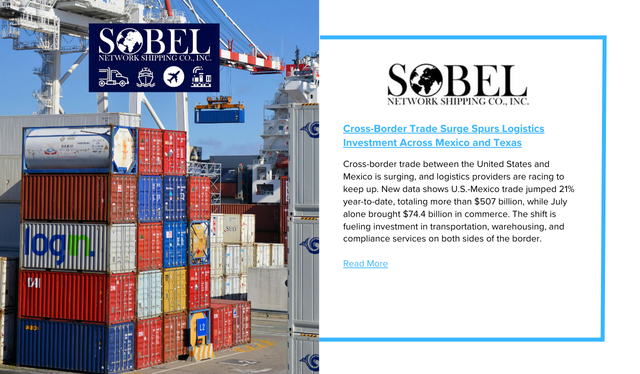Cross-border trade between the United States and Mexico is surging, and logistics providers are racing to keep up. New data shows U.S.-Mexico trade jumped 21% year-to-date, totaling more than $507 billion, while July alone brought $74.4 billion in commerce. The shift is fueling investment in transportation, warehousing, and compliance services on both sides of the border.
End-to-End Logistics Push
Amid this growth, companies are expanding their integrated services to help shippers navigate increasingly complex requirements under the United States-Mexico-Canada Agreement (USMCA). Industry leaders say that digital tools, real-time visibility, and rigorous compliance checks are becoming essential to prevent costly delays at the border, especially as tariffs of up to 25% are applied to certain imports.
Despite soft freight rates, Laredo, Texas — the busiest U.S. port of entry for trade with Mexico — continues to see significant logistics investment. The gateway processed $30.3 billion in two-way trade in July, up 7% year-over-year, and $206 billion so far this year. Multinational firms and regional operators alike are expanding cross-dock facilities and warehousing space to accommodate demand, particularly from the booming automotive and nearshoring-driven manufacturing sectors in Monterrey and the Bajío region.
Manufacturing Expansion in Mexico
Mexico’s industrial sector is also benefitting from new investment. GE Aerospace announced a $29.4 million expansion to strengthen its production capacity. The bulk of the funding will go to its Hermosillo facility, which manufactures aircraft engine components, while a subsidiary in Saltillo will receive upgrades to boost output of ignition systems and sensors. The investment is part of a global modernization strategy to meet growing demand in aviation.
Logistics Footprint in Texas
In the Dallas-Fort Worth metroplex, Binary Container Logistics signed a nearly 300,000-square-foot lease at Sunridge Industrial Park in Wilmer, Texas. The facility, equipped with cross-dock layouts and ample trailer capacity, will expand the company’s regional operations, particularly in energy-related supply chains.
Outlook
With trade volumes climbing and nearshoring reshaping supply chains, the U.S.-Mexico logistics corridor is expected to remain a growth hotspot. Analysts forecast continued investment in customs technology, industrial hubs, and multimodal capacity as companies work to streamline flows in one of the most critical trade lanes in North America.


